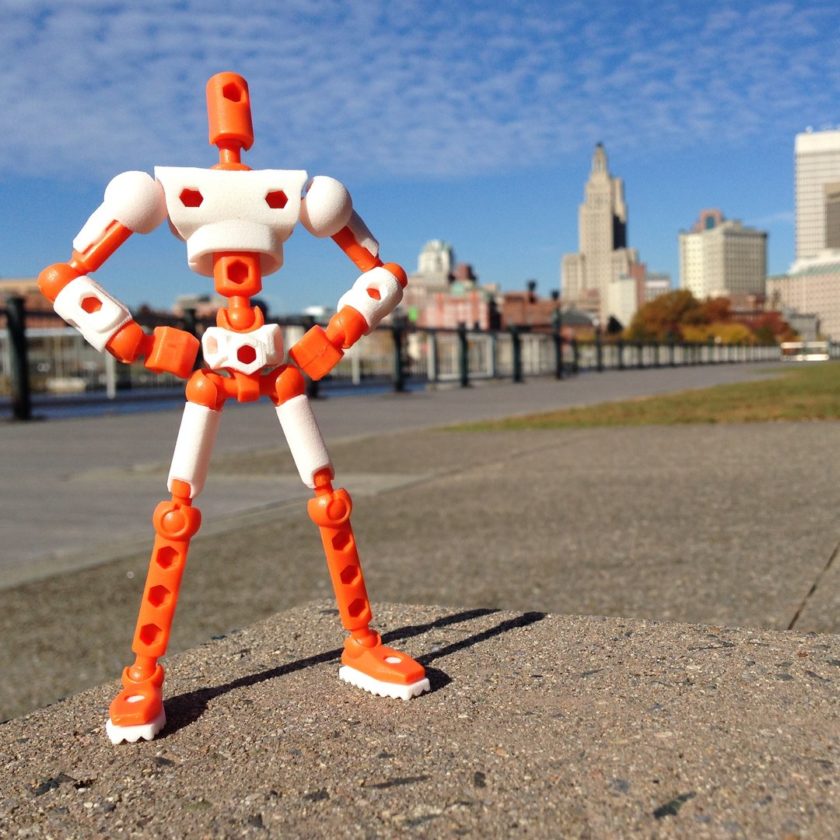I'll answer your questions by number:
1. They're close to the dianaut. The real issue is between the tolerances being really tight if you don't want a floppy figure, you're going to be putting stress on the material that it can't easily absorb in the weakest direction. If you're careful about orientation of the print, you can minimize this but it can lead to trade-offs in print quality.
My first version of the little guy in the previous post actually just had 1mm holes for the arms and legs, then I used styrene rod and hot glue to create the pin and ball joint.
2. I've used the stronger resin and it's definitely better than filament at this scale. The big thing is that you can print at a higher resolution and the resin bonds to itself better between layers than the filament does, leading to less delamination.
3. Anything where the material is ~1mm or thinner, I don't do the slits because the part is more likely to split at that thickness. Over that, I use the slits otherwise the parts can be tricky to assemble.
I will say that there's no hard and fast rule for creating a ball and socket joint. There are suggestions out there (usually along the lines of "make the socket .1mm larger than the ball" or "make the socket 2% larger than the ball") but I find it really varies from printer to printer and even by design software and slicing software.
If you'd like, I could send you the STL for this version of it for you to try printing it and see what you think. Just remember it's a work in progress and the elbows and knees need a major redesign.
Suntzu wrote:
Ooooooweeee Rick that's pretty cool!
Questions:
1. You mentioned in the Mega thread that the ABS balls and stems didn't seem strong enough for daily use . How would you compare the MFT KO Dianaut (or the official Takara ) plastic to the printed ABS from the FDM with regard to strength and flexibility?
I ask as i've gone through several designs for fully poseable (i.e. hinge / swivel biceps or the equivalent ) diaclone scale figures including armature wire designs and molding / casting and at the end of the day..... a drill bit , dremel and superglue seems to be the low tech convenient way to go that works. The problem ? The amount of time it takes to cut and sand the tiny parts .
2. You've printed with a DLP in ABS resin i assume ? How did the ABS resin strength compare to the FDM strength with regard to Dianaut scale parts? I've only printed larger items.
3. I've designed my ball and socket joints in Solidworks with both expansion slits in the socket cup and without. If you've done this as well which one worked best for you at this scale? Experience suggest no slits due to the walls being thin but i don't know for sure yet.
I'd buy some functional ball and socket kits in this scale from you if you make them. It would give me something to fiddle with until i dial in my own designs. I'd love to see your prints close up and use them for sculpting armatures.

A lifetime ago it seems i made a fully poseable Dianaut scaled version of Quickman from the Megaman franchise. Somewhere along the journey to this point in life....i lost him. I guess that's not hard to do with a 1'' tall figure. I've owned a lot of toys like everyone else but that one....i
miss that one. All of this swivel bicep talk is due to my desire to recreate a new version of Quickman without using my old technique.



